Choosing the right wood finish is key to both the look and durability of your home office furniture. It enhances the wood’s natural beauty, protects against daily wear, and helps set the tone of your workspace, whether modern, cozy, or classic. Understanding different finishes ensures your furniture stays functional and stylish, making it easier to create an inspiring and long-lasting home office.
Key Takeaways:
- When selecting the best wood finish, start by identifying the wood type—hardwood or softwood—as each absorbs finishes differently.
- Find a balance between how strong, shiny, and easy to care for the finish is.
- Always test the finish first and apply it carefully.
In this guide, we’ll break down the most common wood finishes, explain their pros and cons, and help you choose the right one to match your style, protect your furniture, and elevate the overall feel of your home office.
Understanding Wood Finishes (And Why They Matter)
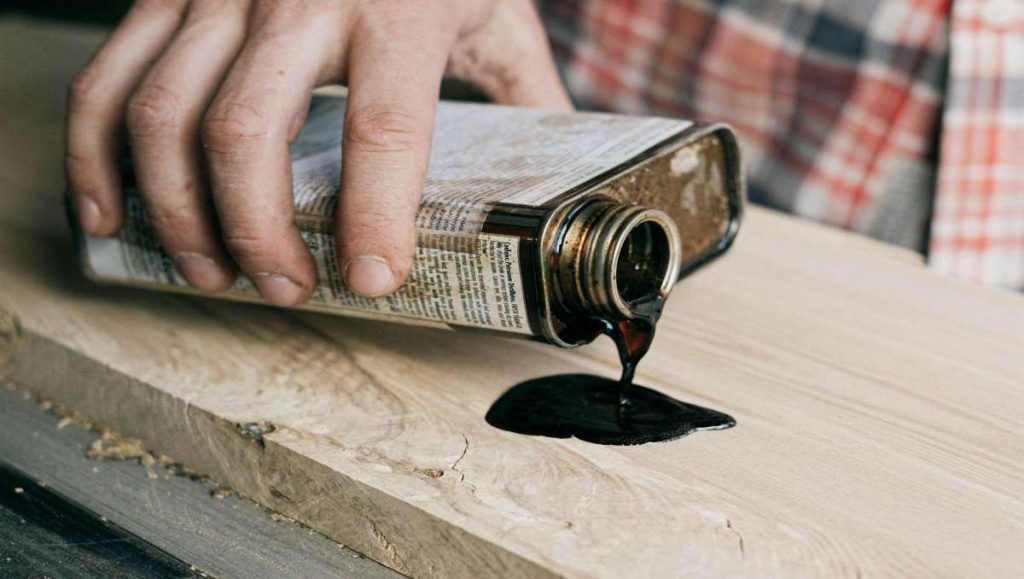
Wood finishes do more than improve appearance. They protect your furniture and enhance the natural grain of the wood. The right finish and finishing process depend on the type of wood. Hardwoods like oak and walnut work well with oil or polyurethane, which adds durability and brings out rich wood grain patterns. Softwoods like pine need a pre-stain conditioner and a lighter finish to avoid blotchy color.
For light woods like maple, clear water-based polyurethane helps maintain a bright, clean look. Darker woods such as cherry or mahogany look best with oil or shellac, which adds depth and warmth. Matching the finish to the wood and how the furniture will be used keeps your home office looking great and lasting longer.
Top Wood Finishes for Home Offices
When selecting the right wood finish for your home office, it’s essential to consider the wood type, aesthetics, and intended use. Here are the top 10 finishes to guide your choice.
1. Lacquer
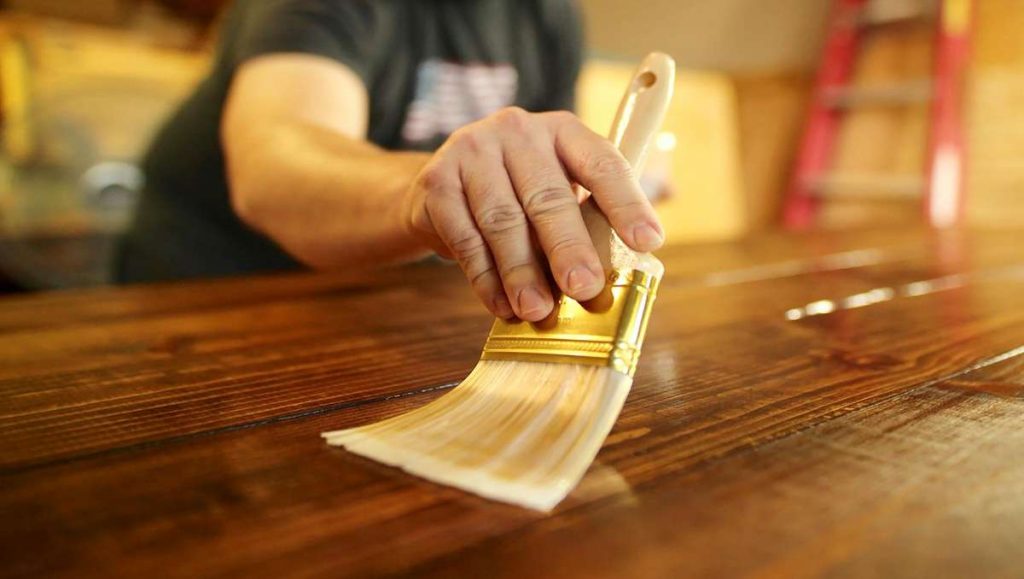
Lacquer is known for its quick-drying properties and can provide a glossy or matte finish, depending on the formulation. It offers excellent protection against moisture and scratches, making it ideal for high-use surfaces like desks and shelving. In research, drying and curing of lacquers was studied, highlighting best practices for application and finish durability.
Tip: Use a spray gun for smooth, even coverage in a well-ventilated area.
2. Varnish
Varnish provides a hard, durable finish that is resistant to scratches and water damage. It enhances the natural color of the wood, bringing warmth and depth to your home office furniture. A study by varnish layer hardness research examined its effects on wood durability and gloss retention.
Tip: Apply in thin coats, letting each layer dry completely before adding the next.
3. Polyurethane
This finish is highly durable and available in water- and oil-based formulas. Polyurethane provides a protective barrier that is ideal for surfaces exposed to heavy use. In a research study, polyurethane vs. polycrylic was examined for durability, drying time, and application tips.
Tip: Choose water-based for faster drying and less odor; sand lightly between coats.
4. Shellac
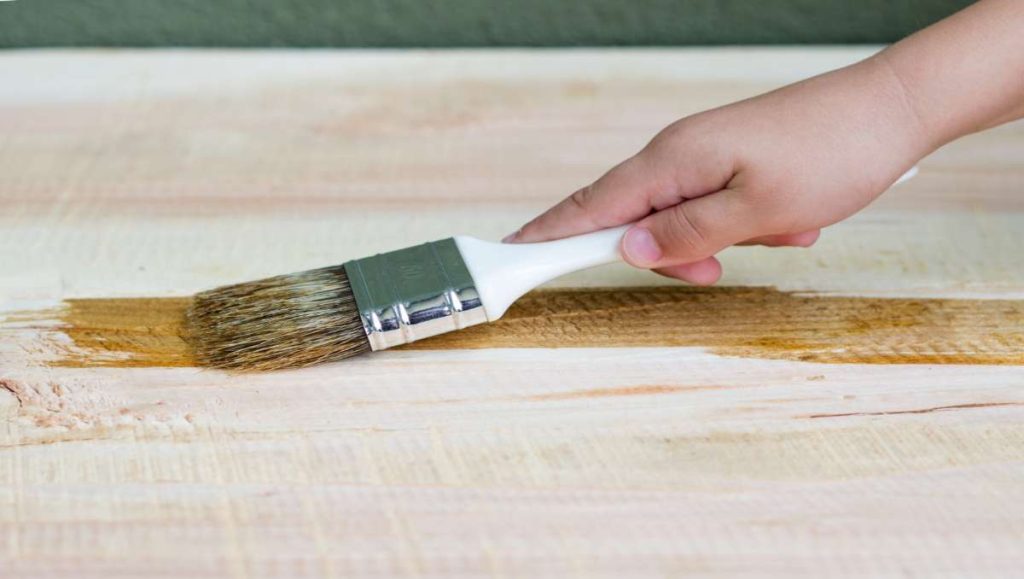
Shellac is a natural finish derived from the secretions of lac bugs. It is easy to apply and creates a warm, natural luster that highlights the wood grain beautifully. Research conducted on shellac finishes examined the effects of UV exposure on gloss retention and durability.
Tip: Best for decorative items not exposed to heat or moisture.
5. Oil Finish
Oil finishes like tung oil and Danish oil penetrate deeply, offering a natural look without the plastic-like coating of some other finishes. They enhance wood grain and provide a soft sheen. In a 2017 study, tung oil with cellulose nanocrystals was shown to improve durability and weathering resistance.
Tip: Wipe off excess oil and reapply periodically to keep the surface fresh.
6. Wax Finish
Wax is easy to apply and perfect for adding a soft sheen to wood surfaces. It is often used in combination with other finishes to add an additional layer of protection. A conducted research on wax-based finishes examined their performance on thermally modified oak wood, highlighting their protective and aesthetic benefits.
Tip: Use on low-impact areas or as a topcoat for a subtle glow.
7. Stain
While technically not a finish, stains can dramatically change the appearance of wood, allowing you to match furniture pieces or create a specific aesthetic. A study on wood color and texture examined how these factors influence aesthetic pleasure and perception.
Tip: Test on a small piece first to confirm color before full application.
8. Water-Based Finish

This eco-friendly finish dries quickly and keeps the natural color of wood intact without yellowing. It’s ideal for lighter woods or contemporary designs.
Tip: Use multiple thin coats for best results and clarity.
9. French Polish
French polish offers a high-gloss, elegant finish known for its deep clarity. It’s a traditional technique used on fine furniture and musical instruments.
Tip: Reserve for decorative pieces; re-polish occasionally to maintain shine.
10. Epoxy Finish
Epoxy creates a thick, crystal-clear coating that protects against heavy wear and moisture. Research on epoxy-treated wood has shown excellent adhesion and preservation of natural details.
Tip: Apply carefully to avoid bubbles and use it on statement pieces like tabletops.
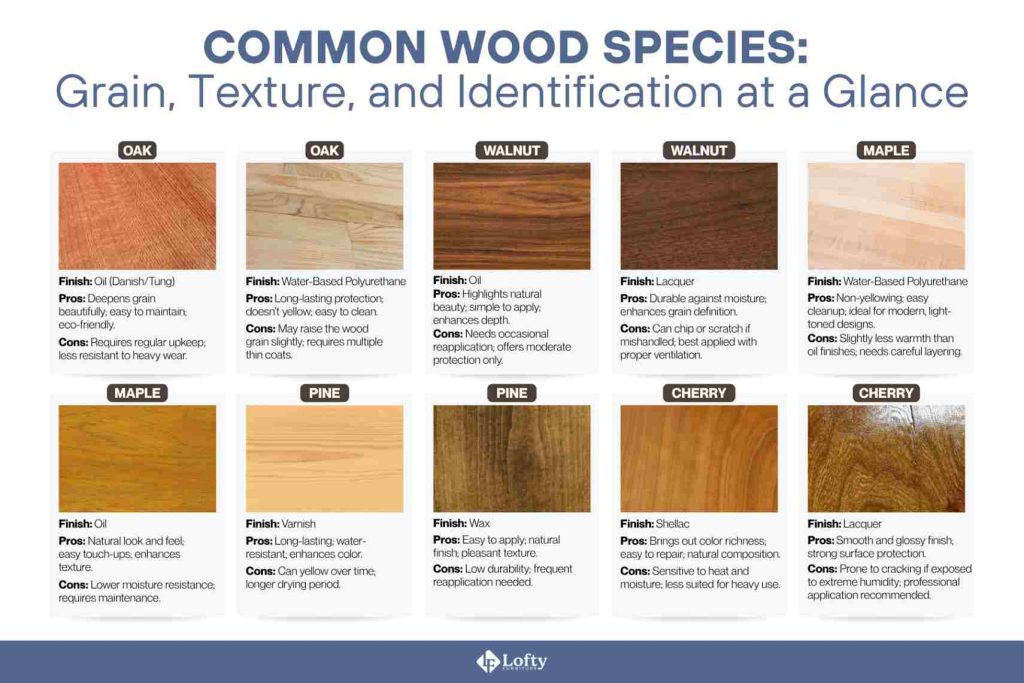
How to Choose the Best Wood Finish for Your Space
Choosing the right wood finish can transform your furniture from plain to polished while ensuring lasting protection. Whether you’re restoring an antique or finishing a new project, understanding your wood type, finish options, and maintenance needs will help you achieve professional, beautiful results.
Step 1: Identify Your Wood Type
Before choosing a finish, determine whether your furniture is made from hardwood or softwood. Recognizing your wood type helps you select a finish that complements its natural characteristics and enhances its strength and beauty.
Hardwoods such as oak, walnut, cherry, and maple are dense and durable woods, ideal for desks, shelves, or tables that get frequent use. They absorb finishes evenly, allowing the natural grain to shine through. Softwoods like pine, cedar, and fir are lighter and more porous. They’re commonly used for accent or decorative pieces and may require a pre-stain or sealer to ensure even absorption.
Step 2: Match the Finish to the Wood and Purpose
Each finish interacts differently with various wood types and intended uses. For hardwoods, oil-based finishes such as tung or linseed oil soak deeply into the grain, enriching color and warmth. Polyurethane coatings, on the other hand, create a tough, protective layer ideal for surfaces that face daily wear. For softwoods, water-based finishes or lacquer are great choices. They dry quickly, preserve the light natural color of the wood, and resist yellowing over time.
When choosing, think about how the furniture will be used. A frequently used desk benefits from durable finishes like polyurethane, while a decorative shelf might look best with a natural oil or wax for a softer, handcrafted feel.
Step 3: Balance Durability, Sheen, and Maintenance
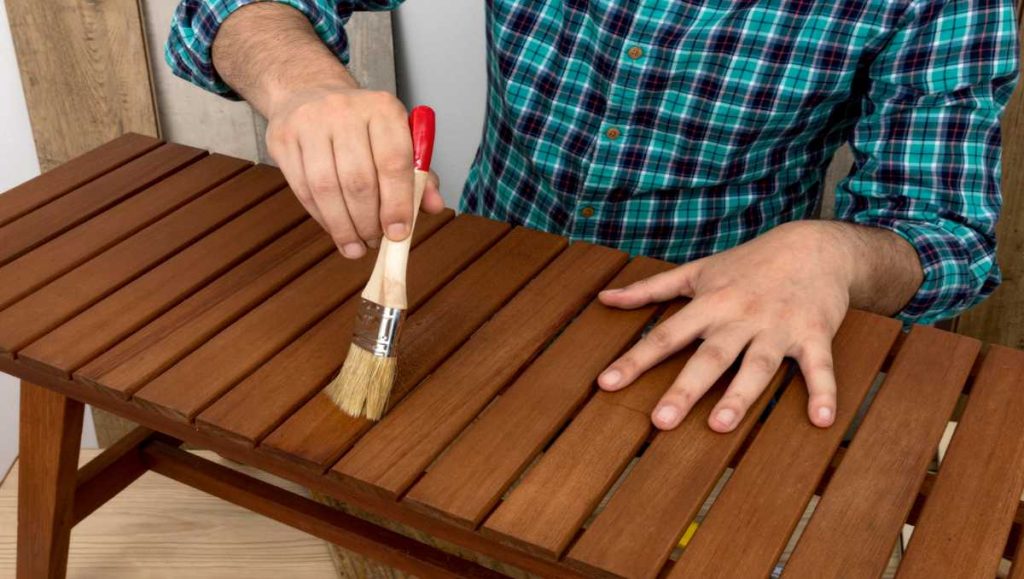
When choosing a wood finish, consider how it fits your lifestyle and how much upkeep you’re comfortable with. Polyurethane and lacquer are ideal for high-use surfaces, offering strong protection against scratches and spills. The sheen also matters—glossy finishes reflect light and highlight the wood grain, while satin or matte finishes create a softer, more understated look. If you prefer a natural feel, oils and waxes provide a beautiful finish but need periodic reapplication, making them better for furniture that sees lighter use. Finding the right balance between durability, appearance, and maintenance will help your furniture stay both functional and attractive over time.
Step 4: Apply and Test Before Finishing Fully
Before applying a finish, test it on a small hidden spot to see the final color and texture. When you’re ready, follow the product instructions, apply evenly with a brush, cloth, or spray, and let each coat dry fully. Keep your furniture looking its best with regular dusting, gentle cleaning, and occasional touch-ups. Choosing the right finish means understanding your wood, how you’ll use the piece, and the look you want. With the right care, your furniture will stay beautiful and durable for years to come.
Upgrade your home office with style, comfort, and lasting durability. Discover our premium collection of Amish-crafted furniture, showcasing the best wood finishes to enhance your workspace.
Conclusion: Choosing Durable and Stylish Wood Finishes for Home Office Furniture
Choosing the right wood finish for your home office furniture means finding a balance between how it looks, how well it holds up, and how much care you’re willing to give it. Oil finishes highlight the wood’s natural warmth and are perfect for creating a cozy, inviting atmosphere. On the other hand, lacquer and polyurethane provide a smooth, durable surface that protects well against daily wear, making them ideal for busy desks and shelves. The finish you pick not only shapes your furniture’s style but also affects its comfort and lifespan. By selecting the right finish, you ensure your pieces stay both attractive and functional for years to come.
Frequently Asked Questions
What is the most scratch-resistant wood finish?
Polyurethane is one of the most scratch-resistant wood finishes, providing a hard, durable protective layer ideal for high-traffic surfaces. It resists wear and tear better than many other finishes, keeping furniture looking new longer.
Is Danish oil better than varnish?
Danish oil penetrates wood to enhance its natural beauty and offers moderate protection with a warm, hand-rubbed finish. Varnish, however, creates a tougher, more durable surface that is better for protecting against scratches and moisture.
What is the best natural-looking wood finish?
Oil finishes like tung or Danish oil are best for a natural look because they soak into the wood and highlight its grain without creating a thick surface layer. They provide a warm, matte finish that preserves the wood’s authentic texture and appearance.
Is polyurethane suitable for all types of wood furniture?
Polyurethane works for most woods, especially high-use pieces like desks and tables. Test on a small area first, as it can darken lighter woods.
Can I mix different types of finishes on the same piece of furniture?
Yes, but ensure compatibility and allow proper drying. For example, use polyurethane on tops and oil on legs. Professional advice can help achieve the best results.
